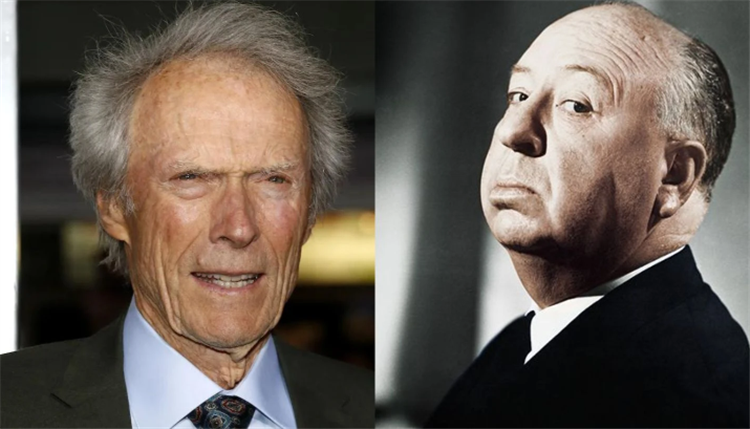There are few filmmakers within the history of Hollywood who are as influential upon the creation of new “movie stars” as the great “Master of Suspense” himself, Alfred Hitchcock. While his name was itself a motivating factor for audiences to see one of his newest films, Hitchcock often found inventive ways to invert expectations of some of the Golden Age of Hollywood’s most well-known performers. By showing a darker side of the generally endearing Jimmy Stewart in his thrillers Rear Window and Vertigo, and transforming the romantic comedy star Cary Grant into an action hero for To Catch a Thief and North by Northwest, it was often interesting to see how Hitchcock cast actors against type.
It’s unfortunate that Hitchcock’s career began to reach its conclusion in the early 1970s, just when the Hollywood New Wave had ushered in the next generation of exciting young stars. While he may have represented an older guard of studio filmmakers, Hitchcock’s risky filmmaking techniques suggested that he could have challenged many of these rising actors by taking them out of their comfort zones. Although it was sadly a project that never saw the light of day, Hitchcock nearly directed Clint Eastwood.
What Was Alfred Hitchcock Working On?

Like Hitchcock himself, Eastwood’s ascension into the upper class of Hollywood had been by no means an easy endeavor. While he spent a majority of the first decade of his career working on low budget horror movies, Eastwood eventually found success with director Sergio Leone on the Western films A Fistful of Dollars, For a Few Dollars More, and The Good, The Bad, and The Ugly. These movies turned him into an international star, and he became one of the industry’s most in-demand actors by the early 1970s.
Casting a star of Eastwood’s caliber was certainly in Hitchcock’s best interest, as the once beloved filmmaker was facing one of the most difficult periods of his career. While he had delivered blockbuster success by turning to horror with The Birds and Psycho, Hitchcock delivered some of his few critical misses at the tail end of the 1960s. Critics and audiences seemed to agree that Torn Curtain and Topaz lacked the tenacity, creativity, and energy that had defined the best work of Hitchcock’s career. For the first time since entering the industry, Hitchcock was considered an underdog.
Although he would eventually obtain some good will with critics thanks to the success of Frenzy and Family Plot, Hitchcock had plans to make a major comeback with the romantic espionage thriller The Short Night, according to Far Out Magazine. With plans to shoot the film in Finland, the ostensibly old-fashioned adventure film would serve as a throwback to the underrated espionage projects he worked on early in his career. However, Hitchcock knew he needed a major star to fund his ambitious new project; at the time, Eastwood seemed like an obvious choice to take the mantle of his next leading man.
Why Did Clint Eastwood Turn Down Alfred Hitchcock?

Just as he was peaking in popularity thanks to the success of the Dirty Harry movies, Eastwood met with Hitchcock over lunch to discuss the possibility of starring in what was likely The Short Night. While he has never revealed the specifics of their encounter, Eastwood was not enthused by the script and turned down the opportunity to work with Hitchcock. While it was unclear if Eastwood had any interest in working with Hitchcock on another project outside of The Short Night, he unfortunately never had the opportunity; Hitchcock died only four years after his final film, Family Plot, was released in 1976. It’s not confirmed which project Hitchcock and Eastwood met for, but the timeline indicates The Short Night was likely the project.
While Eastwood’s refusal had struck a major blow to the film’s production, Hitchcock considered other actors to star in The Short Night. Aiming to find one of the era’s more popular stars that had experience playing tough, non-nonsense characters, Hitchcock approached, as noted in the previously linked Far Out article, Walter Matthau, Sean Connery, and Steve McQueen about taking on the role that was intended for Eastwood. The notion of “The King of Cool” working with Hitchcock is certainly an intriguing one, but unfortunately The Short Night was later shelved entirely.
While working with Hitchcock certainly would have presented a great opportunity for any actor, it’s understandable why Eastwood may have been cagey about signing up for The Short Night. Eastwood was harboring his own ambitions as a director at the time he met with Hitchcock, as his directorial debut Play Misty For Me had been released to great acclaim in 1971. Directing was evidently something he found creatively satisfying, as he directed the Western High Plains Drifter and romantic drama Breezy in quick succession afterward, with both films released in 1973.
Clint Eastwood’s Career Thrives When He’s Director
In the years since the success of Play Misty For Me changed his career forever, Eastwood has rarely starred in films that he didn’t direct. While he returned to star in several Dirty Harry sequels and would occasionally work with legendary Western directors like John Sturges and Michael Cimino, Eastwood generally does his best work when he was overseeing all aspects of a production. Robert Lorenz’s 2012 sports drama Trouble With the Curve remains the most recent film that he starred in but didn’t direct, and at this point, it seems like that will be the last.
Although he’s often referred to as the quintessential Western star, Eastwood’s legacy as a filmmaker is perhaps even grander than his career as an actor. He quickly proved that he was interested in more than just Westerns, and has made many biopics, character dramas, and even comedies. With over forty projects that he’s directed, Eastwood remains one of the most consistent and inventive filmmakers of all-time.
